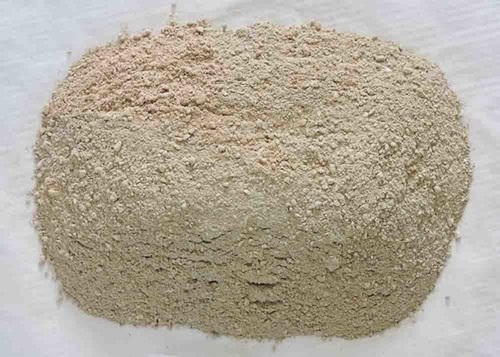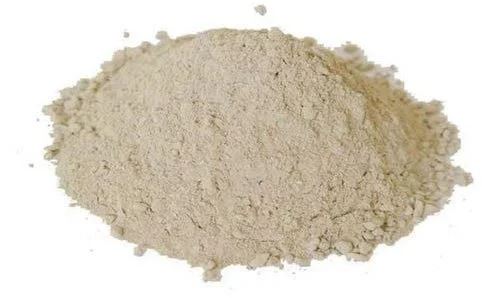Refractory Clay: An Essential Component for Efficient Glass Manufacturing
Glass manufacturing is a complex process that requires high temperatures and precise control to achieve the desired properties in the final product. One crucial element that plays a significant role in this process is refractory clay. Refractory clay, also known as fire clay, is a specialized type of clay with exceptional heat resistance and thermal stability. In this article, we will explore the importance of refractory clay in glass manufacturing and its impact on the efficiency and quality of glass production.
1. Understanding Refractory Clay
Refractory clay is a type of clay that can withstand extreme temperatures without undergoing significant physical or chemical changes. It is primarily composed of alumina and silica, which contribute to its exceptional heat resistance and thermal stability. Due to these unique properties, refractory clay has found extensive use in various industries, including glass manufacturing.
2. Properties of Refractory Clay
Refractory clay possesses several key properties that make it an essential component in glass manufacturing:
High Heat Resistance
Refractory clay can withstand extremely high temperatures, making it suitable for use in glass furnaces and kilns. It retains its structural integrity even when exposed to intense heat, ensuring the durability and longevity of refractory linings.
Thermal Stability
Refractory clay maintains its properties and structure even under rapid temperature changes, minimizing the risk of thermal shock and preventing cracks or other forms of damage to the refractory lining.
Chemical Inertness
Refractory clay exhibits excellent chemical stability, resisting the corrosive effects of molten glass and other chemicals used in the glass manufacturing process. This property ensures that the refractory lining remains intact and unaffected by the harsh environment.
Low Thermal Conductivity
The low thermal conductivity of refractory clay helps to minimize heat loss during glass production. By retaining heat within the furnace or kiln, it improves energy efficiency and reduces fuel consumption, leading to cost savings.
3. Applications of Refractory Clay in Glass Manufacturing
Refractory clay finds numerous applications in the glass manufacturing industry:
Furnace Linings
Refractory clay is used to line the furnaces and kilns where glass is melted and formed. It creates a protective barrier between the hot molten glass and the structural elements of the furnace, ensuring efficient heat retention and preventing damage to the equipment.
Crucibles and Molds
Refractory clay is employed in the production of crucibles and molds used in glass forming processes. These crucibles and molds must withstand high temperatures without deforming or reacting with the molten glass, and refractory clay provides the necessary heat resistance and stability.
Refractory Coatings
Refractory clay-based coatings are applied to refractory bricks and other components within the glass furnace to enhance their resistance to thermal stress and chemical attack. These coatings prolong the lifespan of the refractory materials, reducing maintenance requirements and improving the overall efficiency of the glass manufacturing process.
Glass Fiber Production
Refractory clay is also utilized in the production of glass fibers. It acts as a binder, helping to form the desired fiber structure and imparting the necessary heat resistance to the fibers.
4. Benefits of Refractory Clay in Glass Production
The incorporation of refractory clay in glass manufacturing offers several notable benefits:
Extended Equipment Lifespan
The use of refractory clay as furnace linings and coatings helps protect the structural elements of the equipment from the corrosive effects of molten glass, thereby extending their lifespan and reducing maintenance costs.
Improved Energy Efficiency
Refractory clay's low thermal conductivity minimizes heat loss from the furnace or kiln, improving energy efficiency and reducing fuel consumption during glass production.
Enhanced Product Quality
By providing a stable and consistent thermal environment within the furnace, refractory clay contributes to the production of high-quality glass with uniform properties and reduced defects.
Cost Savings
The durability and heat resistance of refractory clay result in lower maintenance costs, reduced downtime, and improved overall operational efficiency, leading to cost savings for glass manufacturers.
5. Challenges and Considerations
While refractory clay offers numerous advantages, there are some challenges and considerations to keep in mind:
Wear and Erosion
Refractory clay linings can experience wear and erosion over time due to the harsh conditions within the glass furnace. Regular inspections and maintenance are necessary to ensure optimal performance.
Sourcing and Availability
Finding high-quality refractory clay can be a challenge, as it is not widely available in all regions. Ensuring a reliable supply of refractory clay is essential for uninterrupted glass production.
6. Innovations and Future Prospects
The field of refractory materials is constantly evolving, and innovations are being made to improve the performance and efficiency of refractory clay in glass manufacturing:
Advanced Formulations
Researchers and manufacturers are developing advanced formulations of refractory clay that offer improved heat resistance, longer lifespan, and enhanced chemical stability, further optimizing its performance in glass production.
Sustainable Solutions
There is a growing focus on developing sustainable and eco-friendly refractory materials. Innovations in refractory clay technology aim to reduce environmental impact, such as the use of alternative raw materials or recycling methods.
Conclusion
Refractory clay is an essential component in efficient glass manufacturing. Its high heat resistance, thermal stability, and chemical inertness make it indispensable for lining furnaces, producing crucibles and molds, and improving energy efficiency in the glass production process. Despite challenges, ongoing innovations and a focus on sustainability ensure a promising future for refractory clay in the glass manufacturing industry.
FAQs
What is refractory clay?
Refractory clay, also known as fire clay, is a specialized type of clay with exceptional heat resistance and thermal stability.
How is refractory clay used in glass manufacturing?
Refractory clay is used to line furnaces, produce crucibles and molds, apply refractory coatings, and contribute to the production of glass fibers.
What are the benefits of using refractory clay in glass production?
Using refractory clay in glass manufacturing extends equipment lifespan, improves energy efficiency, enhances product quality, and results in cost savings.
What challenges are associated with refractory clay in glass manufacturing?
Challenges include wear and erosion of refractory linings and ensuring a reliable supply of high-quality refractory clay.
What is the future outlook for refractory clay in glass manufacturing?
The future holds advancements in formulations for improved performance, as well as a focus on sustainable and eco-friendly solutions in refractory materials for the glass industry.
Source
https://shreeramkaolin.com/refractory-clay/
https://www.brainkart.com/article/Fire-Clay-Or-Refractory-Clay_3668/



Comments
Post a Comment